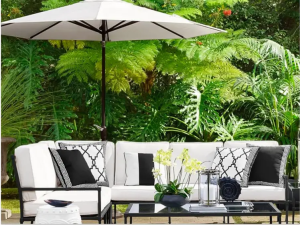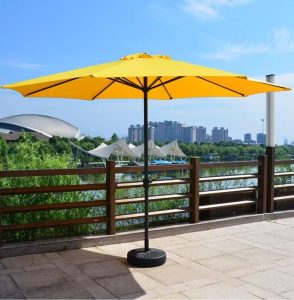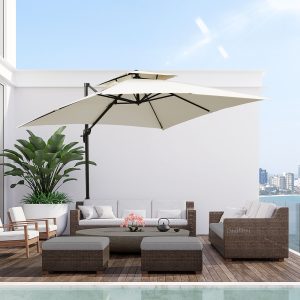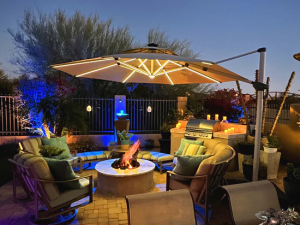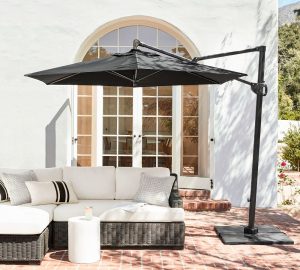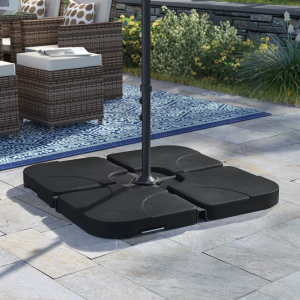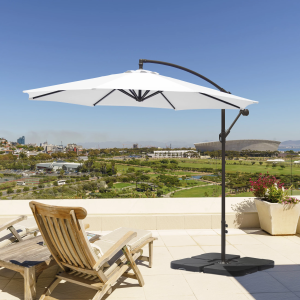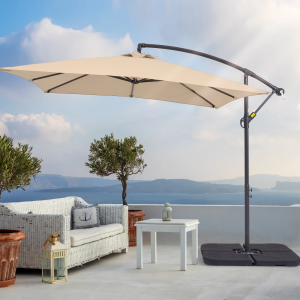More
Building the Backbone: Frame Construction in the Production of Garden Umbrella With Stand
Building the Backbone: Frame Construction in the Production of Garden Umbrella With Stand
Introduction: Patio umbrellas are more than just decorative accessories; they’re engineered products designed to provide shade, style, and durability. A critical phase in their production is frame construction, where the backbone of the umbrella takes shape. In this blog post, we’ll dive into the art of crafting patio umbrella frames. From the choice of frame materials to the specialized techniques employed, this process is a testament to both form and function.
Selecting the Right Frame Material:
-
Aluminum: Aluminum frames are popular for their lightweight nature and resistance to rust and corrosion. They provide an excellent strength-to-weight ratio, making them ideal for stability and portability. This material is known for its durability and ease of maintenance, ensuring the frame retains its structural integrity over time.
-
Wood: Wood frames offer a classic and natural aesthetic. They can be a durable choice when treated and maintained correctly. Manufacturers often use hardwoods like teak, which have natural resistance to moisture and decay. Proper finishing and sealing are crucial to enhance their durability.
-
Fiberglass: Fiberglass frames are highly flexible, making them less prone to breaking in strong winds. They offer a balance between durability and lightweight construction. Fiberglass is also naturally resistant to corrosion, ensuring the frame’s longevity in various outdoor conditions.
Crafting the Frame:
-
Cutting and Shaping: Depending on the chosen material, the frame construction process begins with cutting and shaping. For aluminum frames, specialized machinery is used to cut and shape the frame parts. Wood frames require expert craftsmanship to shape and join the wooden components. Fiberglass frames are molded into shape, ensuring consistent and precise dimensions.
-
Welding and Joining: For materials like aluminum, welding or joining techniques are employed to assemble the frame components. This stage requires precision to ensure the frame’s stability and strength. Wood frames are often joined using mortise and tenon joints or other woodworking techniques, while fiberglass frames are molded as a single piece, eliminating the need for additional joining.
-
Protective Coatings and Finishes: To enhance the frame’s durability and aesthetics, protective coatings or finishes are applied. Aluminum frames may be powder-coated or treated with protective finishes to resist corrosion and enhance appearance. Wood frames are sealed and stained to protect against moisture and UV damage while maintaining a polished look. Fiberglass frames often have a gel coat or finish applied to ensure longevity.
Ensuring Stability, Strength, and Longevity:
The construction of the frame is a meticulous process that demands a focus on stability, strength, and longevity. The choice of materials and techniques ensures that the frame can withstand outdoor conditions and provide reliable support for the canopy. Proper sealing, finishing, and protection are integral in preserving the frame’s integrity over time.
Conclusion:
Frame construction in the production of patio umbrellas is where art and engineering intersect. The choice of frame material sets the tone for the umbrella’s durability and aesthetics. From cutting and shaping to welding or joining, each step requires precision and craftsmanship. Protective coatings and finishes ensure the frame’s longevity and resistance to the elements. The result is a patio umbrella that not only provides shade and comfort but also stands as a testament to thoughtful engineering and design. The backbone of the umbrella is built to last, ensuring you can enjoy your outdoor space in style for years to come.


